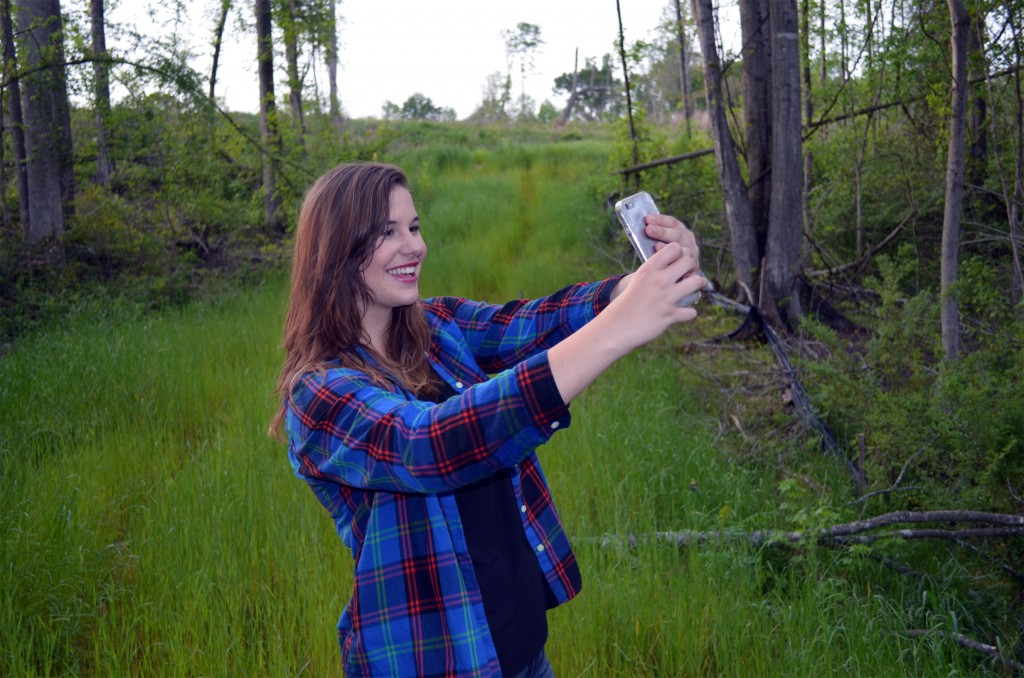The Ultimate Selfie
Posted on by
“Unable to leave the beauty of his reflection, Narcissus drowned.”
Painting from Echo and Narcissus, John William Waterhouse 1903
Now within reach, our personal genomic sequence offers an incredible reflection of who we are, and great promise to improve human health, but there are serious concerns about embracing it too quickly.
Empowered Consumers in the Era of Me
If social media is any indication, we, like Narcissus of ancient myth, are surely self-obsessed creatures. Indeed, 21st century culture is epitomized by the innumerable sharing of one’s own image along with constant records of daily personal and family life. In a decade, Facebook alone had assembled more than 1.3 billion users by 2014, creating a community of people larger than China. With the widespread use of smart phones and tablets, participants can, wherever they happen to be, create and post images of themselves in a matter of seconds. In 2013, the term “selfie” became the Oxford Dictionary’s word of the year since its use was said to have increased 17,000 percent from the previous year. Meanwhile one of many YouTube tutorials on how to take the best self-portraits has garnered over 3.2 million views to date.
So it is not surprising that in a time of the “Me Me Me Generation” that there might be interest in possessing the ultimate description of “me”- the literal sequence of one’s own genome that can be carried in hand. The appeal of the genome may be uniquely powerful for those who feel they must know more about themselves, and indeed there has never been a “mirror” with so much potential power. The 3 billion base pairs in the individual cells in our bodies function, in conjunction with our environment, to shape who we are, how we look, how we age, and how healthy we are and will be. Francis Collins, Director of the National Institutes of Health described the human genome sequence as “… our own instruction book previously only known to God.” Moreover, many people view the genome as a means to better understand one’s ancestral past and as a window to their biological future. The greatest promise, however, is to use genomic information in preventing and treating disease, in a new era of precision medicine. For most aspects, the science isn’t there yet – but in the era of Instagram – many do not wish to wait.
“The Narcissome?”
Once prohibitively expensive, whole genome sequencing (WGS) was, until recently, only available to the very wealthy and accomplished and/or to researchers with unique access. In fact, the very first individual genome sequenced, belonging to acclaimed genomics pioneer Craig Venter, was completed in 2007 at a cost of $2.7 billion. Soon after, the genome of James Watson, the co-discoverer of the DNA molecule, was sequenced as well. Since that time, other researchers have followed suit in volunteering their own bio samples for WGS leading some critics to wryly describe such projects as the sequencing of the “narciss-ome.” But as costs have steadily decreased closer to the “$1,000 genome” benchmark, the number of human genomes sequenced has increased and may soon grow exponentially. In a recent study, 59% of people in a population based sample expressed interest in WGS for themselves, and among participants who were parents, 58% were interested in WGS for their youngest children. The intense desire that some people have to know more about their personal genomes has been widely publicized, for example in documentaries such as “My Beautiful Genome.” Regardless, fascination with one’s genome is not mere vanity if it leads to improvements in health.
Depth of Data with Potential Health Benefits, But Also Potential Harms
It has long been predicted that affordable WGS will revolutionize the practice of medicine and for people with rare genetic diseases, sequencing is already a useful diagnostic tool. However, the use of genomics to avoid future health problems became a mainstream issue when in 2013 actress and popular icon Angelina Jolie made public her decision to undergo surgery to reduce breast cancer risk, given that she carried a BRCA mutation and had a family history of ovarian cancer. The resulting increase in public awareness of issues involving genes, health, and risk was thought to be so strong that it has widely since been described as the “Angelina Effect.” Indeed, life-saving evidence-based recommendations and interventions exist for BRCA and hereditary breast and ovarian cancer and for a few other examples like Lynch Syndrome and colorectal cancer. These guidelines for use in certain specific scenarios are included in some of the few genomic applications considered Tier 1 or ready for use in clinical practice today, but they apply to only a small percentage of the population. Nevertheless, research may soon lead us to many more such applications, which can identify millions of people who do not know they are at risk and could benefit from life-saving interventions.
Because WGS efficiently sequences the entire genome at once, soon there may no longer be a need for a variety of individual genetic tests that assess only one or a few variants at a time. However what makes this “wide net” aspect of WGS a clinical game changer is that while it provides the information to diagnose people at risk for suspected genetic diseases, it simultaneously assays for thousands of other genetic variants that are secondary to the reason for the test. Most of this resulting dataset provides information of yet unknown importance but may also include “incidental findings [PDF 342.83 KB]” or variants with known clinical significance. There is currently great controversy in the clinical genetics field about how these findings should be reported to patients who undergo genome sequencing for any reason.
Many experts argue that trained genetic counselors and health practitioners should be involved in the interpretation of genetic test results, especially for WGS. Cautions include that genetic information without known clinical significance imparts no useful information but can bring harms if healthy people act on them, including: wasted economic resources, anxiety and psychological stress; misguided reproductive decisions; and unnecessary follow up medical tests and procedures including surgery. Very little research of WGS harms has been conducted to date, though a small study found that some people experience WGS results related distress and regret. The existence of harms in more established areas of genetic testing is more than a theoretical matter, for example false positives from DNA-based noninvasive prenatal testing and anecdotal reports of terminated pregnancies as a result. There also remain other important ethical issues including privacy, genetic discrimination, and inequity in access.
Collectively these concerns present a dilemma for the health care system because they must soon be weighed and tested in balance to the demands, and many would argue, the rights of individuals to access their own medical data as WGS becomes more and more mainstream. In a recent study among 127 research participants, all but 4 expressed a desire to obtain their incidental findings if they could lead to treatment and surveillance though 61% (78/127) wanted to know them even if they did not.
While many patients are eager to find out what’s in their double helix, physicians, however, are faced with a new predicament. Beyond the few available evidence based recommendations, there are thousands of genetic studies suggesting that thousands of variants may or may not be associated with health outcomes. How does the doctor keep up with the exploding field? How does he/she answer questions about variants for which no clinical action can be taken? Are there liability concerns for revealing or failing to discuss this information?
A Public Health Approach is Needed
So, if the good news is that we are beginning to have affordable access to the “language of life,” the bad news is that we understand only a few words now. There will be no Rosetta Stone to guide us. What we do know is that, except for single gene disorders, disease causation is complicated and involves interaction with many genetic and environmental factors. Thus careful population-based research of both aspects is critical for true interpretation.
However, as the price of WGS decreases and the knowledge base to interpret it rapidly increases, many believe that we will know enough about the benefits and harms for the technology to be ready for population-wide screening in the near future. If so, we as members of the general public and our medical providers, may soon have a tremendous amount of uniquely personal information at our finger tips. Meanwhile, in the next few years, most WGS is expected to be conducted in association with clinical research efforts including the Precision Medicine Initiative: a direct effort to increase the validity and utility of WGS data.
While WGS technology provides an unequivocal reflection of personal biology, for most people it could be argued that a common, plate glass mirror provides more useful information for health today. However, it has been estimated that by the year 2020, 5 million people will have had their genomes sequenced. In order for this promising, new technology to provide the best balance of health benefits and harms for all people, evidence-and population-based science must lead the way to responsible implementation. Only then can the public health goals of precision medicine be realized. For now, we should look into the captivating pool of information that reflects our magnificent genome, strive to carefully learn and understand the murky depths of its complexity, and take care not to plunge in too quickly.

Posted on by





